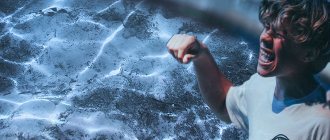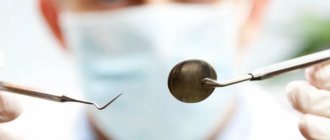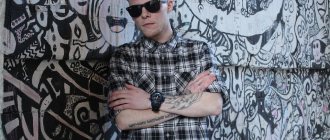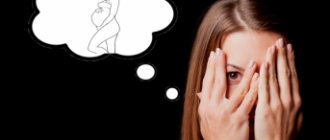Among the huge number of different phobias, it is worth highlighting mysophobia - fear of dirt and germs. Of course, every normal person tries to keep his body and home clean, washes his hands when coming home from the street, and performs other hygiene procedures to protect himself from pathogenic microbes.
But for some people, the fear of contracting any disease takes on a pathological form. For a person suffering from mysophobia, any dirt or dust seems to be a source of danger, so he strives for sterile cleanliness.
Let's figure out what mysophobia is, how it manifests itself, why it occurs, and how to get rid of it.
General information
Mysophobia , or otherwise fear of pollution, is a psychological disorder and is expressed in the form of an obsessive fear of getting dirty, being in a polluted room, and in general, of coming into contact with dirt and potentially contaminated objects.
It should be distinguished from germophobia, verminophobia, bacteriophobia (fear of germs) and other phobias , where fear consists of the fear of contracting an infectious bacterial or other disease when interacting with contaminated objects and the risk of getting germs, for example, on your hands. If earlier the desire to wash your hands was a sign of fear of dirt and obsessive-compulsive disorder , then later the American psychologist G.S. Stellivan found out that the basis is not a fear of dirt and germs, but solely the desire to ensure that hands are always washed.
Despite the fact that the disorder is quite rare, many famous people suffered from it - F. Nietzsche, V. Mayakovsky, V. Dobrynin, etc., and was also highlighted in such films as “It Can’t Be Better”, “Cleaning with Passion” ", in the television series "The Big Bang Theory" (main character S. Cooper)
Diagnosis and treatment
This disorder interferes with a person’s normal life; treatment of mysophobia is a matter for specialists, psychiatrists and psychotherapists, depending on the degree of its severity. To relieve the patient of obsessive panic, they use an integrated approach that combines techniques for influencing the psyche and medications. Healing takes time and effort, especially in advanced cases. The patient and the doctor will be required to diligently and follow all recommendations. Only in this case can we hope for remission and lasting results.
The specialist provides a test for mysophobia, based on the results of which he can conclude how serious the patient’s case is and what methods should be chosen for successful therapy. Usually, patients themselves do not think about how to cure mysophobia. This question often worries their loved ones and only when the patient loses touch with reality and is in constant tension from fear of infections.
If a psychotherapist has diagnosed mysophobia, how to treat this disease? For example, the method of cognitive therapy is considered quite successful. First of all, the doctor and patient work together to find the root cause, and then learn to keep fear under control. To do this, use the Schwartz technique, which consists of four stages.
Mysophobia: treatment with 4 steps:
1. Understanding that germs are not as harmful as washing your hands too often and treating all surfaces with antiseptic. The realization that fear of infection is irrational. It is phantom, exaggerated and invented by the man himself. 2. Search for the cause that influenced the development of the disease.
3. Learning to combat obsessive images about germs, the ability to be distracted and replace negative experiences with positive emotions.
4. Analyzing your fears and trying to see yourself from the outside. Understanding the absurdity of the situation and obsessive actions.
In addition to this therapy, hypnotherapy is used in the treatment of fear of germs. Immersed in hypnotic sleep, the patient receives instructions from the doctor that will help him cope with obsessive states. He is also instructed in the field of auto-training. A person receives a number of recommendations for independent use. This helps reduce anxiety and increase self-esteem.
To achieve a greater effect, a specialist may prescribe certain medications. These are medications that help reduce anxiety, improve sleep and lift your mood. All together helps to quickly get rid of the phobia.
Pathogenesis
Mysophobia may be a manifestation of obsessive-phobic symptoms of schizotypal personality disorder . As the main components of the syndrome, obsessive fear of pollution and fear of germs can be exacerbated under certain conditions, causing patients to become antisocial and isolated. For example, Mayakovsky had an eccentric habit of carrying disinfectant in his right pocket, which he used immediately after shaking hands.
Initially, a phobia is formed in a pathogenic situation, intensifies under the influence of memories and fills all thoughts, turning into obsession and developing like conditioned reflexes.
conclusions
If a person washes his hands often, is it disgust or a mania for catching a serious illness and suffering from it? It is impossible to determine by one sign. In the absence of other circumstances that cause confusion among society, it can be assumed that the person adheres to the principles of hygiene.
If, in addition to frequent hand washing, there is a sharp individualization, detachment from the outside world, fear of touch, fear of shaking hands, then a colleague or loved one needs help - these are symptoms of pathological changes at the level of consciousness, more precisely, a fear of dirt.
Timely treatment can completely eliminate the fear of dirt or teach a person to deal with their emotions and physiological reactions, overcoming the fear.
Classification
Mysophobia is not a classic example of the fear of getting sick ( nosophobia ) or due to contact with dirty objects, dust, fear of contracting helminths or other infections, while fear and fear may concern the following objects:
- chemicals, patients may fear radiation ( radiophobia ) or other chemical contamination;
- small objects - fragments ( oxyphobia ), rusty nails that may be in dirt, earth, sand, etc.;
- sewage – ripophobia ;
- fear of dirt and the germs contained in it ( spermophobia );
- non-washable items, furniture and rooms in general, which, even if they look clean, may be second-hand, dusty ( amatophobia ) or truly dirty.
Prevention
As a preventive measure, it is recommended to increase stress resistance, treat diseases in a timely manner, and lead an active lifestyle. People at risk should be attentive to their health, and at the slightest sign of phobias or neuroses, consult a psychologist. It is recommended to get rid of such qualities as suggestibility, suspiciousness, and perfectionism.
It is important! Parents should be more loyal to their children and not punish them for every soiled sweater or unsuccessful trip to the toilet. Don't frighten your child with germs.
Causes
Obsessive states and fears usually develop as a result of a long-term psychotraumatic situation. Most often, the fear of dirt is perceived as an extracorporeal threat and is caused by obsessive thoughts and fears for one’s health or for one’s loved ones, which can be triggered by unpleasant memories or ideas.
The object of a phobia is a symbolic projection of real objects that were associated with traumatic situations, anxiety, or separation of the child from his parents. Thus, to trigger neurosis , repetition of traumatic events is sufficient, for example, anticipation of the moment of separation from the object of attachment.
In addition, the following are considered predisposing factors for the development of mysophobia:
- inculcation by the media of the need for constant maximum cleansing of one’s homes and body;
- suggestibility and psychological imbalance;
- strict education and lectures on the horrors of pollution and poor hygiene;
- hypochondriacal personality type;
- hereditary depression ;
- examples of negative experiences among people in a close circle of friends, for example, contracting AIDS from a needle in public transport;
- increased sense of perfectionism and desire for self-improvement.
Mysophobia test
Diagnostics must be comprehensive. The diagnosis is made based on the observations of a psychologist during a conversation with the client, collecting anamnesis, and studying symptoms. Testing is also carried out. For example, you can use the test to identify OCD.
Answer 10 questions by choosing one of the answer options:
| A | b | V | G | d | |
| How many hours a day do you spend on obsessive thoughts? | No thoughts | Less than an hour | 1–3 hours | 3–8 hours | More than 8 hours |
| How disrupted is your daily life due to intrusive thoughts? | Not broken | Slightly damaged | There is discomfort, but the way of life is the same | Severely disturbed | Completely broken |
| How much would you rate the discomfort caused by obsessive thoughts? | I don't feel it | Weak | Strong, but overall feeling good | Strong, not feeling very well | Very severe discomfort, poor health |
| Can you resist intrusive thoughts? | I can always | I can in most cases | Sometimes I can | More often I can't | I can not |
| How much control do you have over your thoughts? | Fully in control | In most cases | Sometimes | Rarely | Can't control |
| What is the daily duration of rituals (obsessive actions)? | None | Less than an hour | 1–3 hours | 3–8 hours | More than 8 hours |
| How much do rituals interfere with your daily life? | Don't interfere | A little disturbing | Significantly interfere, but the same way of life | They interfere a lot | Change their lifestyle |
| What discomfort do rituals bring? | No discomfort | Weak | Strong, but overall feeling good | Strong, not feeling well | I feel very strong psychological discomfort all day long. |
| Can you resist rituals? | Can | I almost always can | Sometimes I can | More often I can't | I can not |
| How much control do you have over your rituals? | Fully in control | In most cases | Sometimes | I have little control | Can't control |
Calculate the total score (a–0 points, b–1 point, c–2 points, d–3 points, d–4 points) and summarize:
- from 0 to 7 points – no disorder;
- from 8 to 15 points – mild symptoms of the disorder are expressed, it is recommended to consult a psychologist;
- from 16 to 23 points – symptoms are of moderate severity, you need to visit a psychologist;
- from 24 to 31 points – symptoms of severe disorder are found, visit a psychiatrist or clinical psychologist;
- from 32 to 40 points - an advanced case of phobia of fear of germs, urgent psychotherapeutic help is needed.
In addition, you can use tests to identify anxiety and phobias. For example, the Zang scale, the Spielberger–Hanin test. A specialist can also prescribe general personality questionnaires, diagnostics of individual personality traits, and differentiated diagnostics to exclude other disorders.
Symptoms
As a result of obsessive fears, neurasthenia or neurosis may develop, and also manifest itself in the form of the following symptoms:
- increased irritability and/or tearfulness, as well as other manifestations of hyper-emotionality;
- attacks of suspiciousness and anxiety;
- depressed mood and thoughts;
- sleep disorders;
- fatigue and decreased ability to concentrate for long periods of time;
- difficulties adapting to a team;
- motor retardation;
- idiopathic muscle spasm or tremors ;
- vegetative-vascular disorders, including headaches, increased sweating of the palms, fainting , shortness of breath appetite disturbances and disorders of the digestive system.
In addition to physiological and mental disorders, patients develop a system of protective rituals. In mysophobes, the fear of dirt is expressed in an obsessive desire for cleanliness and disgust:
- constant hand washing and use of disinfectants;
- avoiding public restrooms, transportation, or other common items;
- disgust towards contact with animals, close relationships and physical contact with people;
- frequent change of clothes and linen to clean ones;
- the desire for self-isolation, including avoidance of social events, lack of desire to get close to anyone;
- constant use of personal hygiene products, gloves, masks, etc.;
- too frequent general cleaning of the house with a large number of different expensive cleaning products.
Characteristic manifestations
A person realizes that mysophobia has formed in his subconscious, but he cannot control himself. He washes his hands regularly, more often than necessary, and tries to disinfect everything around him.
A person with mysophobia will have the following behavioral characteristics:
- at least once a day he conducts rituals to cleanse himself or the surrounding area, gradually the number of rituals will increase;
- the person may begin to avoid visiting public toilets, will be afraid to go into the fitting room when visiting a clothing store, and will avoid public catering;
- nervousness arises, which turns into uncontrolled behavior - the person becomes absent-minded and unable to concentrate on completing any task, he is frightened by walking distance to dirt;
- such a person behaves separately, does not allow others to use his objects, even take a pen. And if he needs to use some common object taken from the office, he will take a long time to clean it, and after contact, wash his hands thoroughly;
- a person becomes a recluse, there is a fear of leaving the house, where he has perfect cleanliness and a ban on the entry of strangers;
- practically excludes communication with other people, even with relatives.
A strong need for cleanliness can lead to a state of panic and anxiety, which can be mistaken for schizophrenia.
If we consider the physiological level of manifestations, then the following symptoms are characteristic of mysophobia:
- tachycardia;
- dizziness;
- sudden surges in pressure;
- body stiffness;
- nausea;
- darkening of the eyes.
Psychologists' opinions
The world that surrounds us is teeming with various microbes and bacteria. This does not mean that all of them are a potential threat to human life and health. Human immunity is adapted to fight pathogens, so you should not be afraid of instant infection when coming into contact with contaminants of various origins.
Psychologists say:
- Children acquire immunity to various types of microorganisms by playing in the dirt from an early age. Such children get sick less often than those whose parents forbid them to touch anything on the street. Therefore, there is nothing fatal about your child playing around in dirt, sand and dust.
- There are people living today outside the civilized world. They don’t wash their hands before eating, eat berries from the bush, and still don’t get sick with colds or flu. These are completely healthy people with a strong, developed immune system.
- During seasonal illnesses, we cannot effectively protect ourselves, so sufficient precautions would be: washing your hands after being in public places, lubricating your nose before going outside, and trying not to be exposed to hypothermia.
- If you become infected and recover from the disease, your immunity will become stronger, which will allow you to resist this type of viral infection the next time. This is how the human body works. This was due to millions of years of adaptation to the conditions of the surrounding world.
- Microbes exist everywhere, which is a natural state of affairs and not dangerous to humans. Dirt is not a threat, and if you get dirty, just take a refreshing shower.
The information belongs to the site R_E_W.M_E_D
Related posts:
- Anancastic Personality Disorder Anancastic Personality Disorder (APD) is a congenital or early-onset…
- Causes of mental disorders At the moment, mental disorders have been studied least extensively. Mental disorder…
- Nosebleeds during stress Anyone has had to deal with nosebleeds at least once...
- Cyberchondria. A disease that absolutely anyone can suffer from. Did your neighbor cough on the minibus? It’s definitely a coronavirus, I’ll get sick tomorrow...










